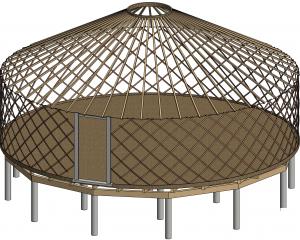Queenstown residents would probably face a similar scenario to the one in Kaikoura should the Alpine Fault rupture, and they could be cut off by landslips for weeks.
Otago Regional Council chairman Stephen Woodhead said Queenstown residents should learn from the images of collapsed hillsides blocking Kaikoura from every direction.
Emergency management officer for the Queenstown Lakes and Central Otago districts Trevor Andrews said the Wakatipu Basin was similar to Kaikoura in relying heavily on tourism, and its transport network was also particularly vulnerable to a major earthquake.
Mr Woodhead said that when the Alpine Fault ruptured, the bluffs and steep terrain surrounding Queenstown meant it could be blocked off for weeks.
''We are talking large landslides; not something that can be just cleared in a few days. You'd end with Queenstown potentially isolated and maybe even the Kawarau River blocked or partially blocked.''
Civil defence authorities were well aware of the risk of Queenstown being cut off and the earthquake on Monday should serve as a timely reminder for the public.
People should think about the consequences of being stuck in Queenstown for weeks and make sure they were prepared.
''You might have to live for a number of weeks on limited supplies.''
Other consequences from an Alpine Fault quake could include a tsunami on Lake Wakatipu.
While Queenstown was the settlement in Otago at most risk, other parts of the region were also prone to landslips.
''There are very similar scenarios [to Kaikoura's] that could play out on some of our hillsides in inland Otago.''
In Southland, Milford Sound was extremely prone to landslips and highways being blocked.
Mr Andrews said while Kaikoura had about 700 tourists on Monday, Wakatipu could have many thousands at the time of a natural disaster.
Not only would they be cut off for an extended period, but many could be trapped in communities such as Glenorchy, Kingston and Gibbston.
Tourism businesses had a ''legal and moral responsibility'' to keep the visitors under their care safe during a disaster.
Their collective response would be vital for New Zealand's reputation overseas.
He had been struck by television coverage of tourists reacting to an aftershock while sheltering at a Kaikoura marae.
''They looked very, very frightened - these folk aren't used to it. As Kiwis, we are used to living on the Shaky Isles and we kind of understand what's going on.''
Part of his job was encouraging businesses to develop ''continuity plans'', which built resilience and know-how into their facilities, computer systems and staff.
He had worked on such plans with major tourism companies such as Skyline Queenstown, NZSki and AJ Hackett Bungy, which were ''leading the way'' in the area.
Residents needed to know the location of their nearest Civil Defence centre and have a plan for reuniting their families, he said.
''Their home might not be accessible because of damage to roads or bridge abutments or collapse. Have they had the discussion about where they're going to meet?''
He was also working on tailored response plans for every community in the district. That involved information packs, distributed to every household, that showed Civil Defence centre locations and emergency evacuation routes, and gave advice about what to do during an event.
That work was about 25% complete, and he expected every community to have a response plan within two years.
-Addtionally reported by Guy Williams











